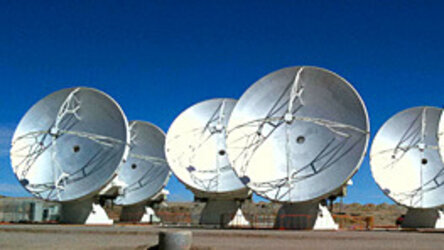Method of Controlling a Hydraulic Actuator
| 528 - Abstract: |
| This technology provided by the European Space Agency offers a method for controlling a hydraulic actuator to apply reciprocating excitation to a load, in particular to carry out mechanical vibration tests to a structure with mass greater than one tonne. The frequency is in the range of 10 Hz to 100 Hz. The levels of acceleration are between 10 mg and 10 g. ESA is looking for partners for a licence agreement and for industrialising the technology. |
Description of the offer:
To study the vibration behaviour of structures, these structures are fastened to equipment constituted by a test bench fitted with one or more actuators enabling reciprocating motion of controlled frequency and amplitude. The response of the structures to the excitation is measured using accelerometers. Equipment of that type exists in many variations, as the structures for testing may present a very wide range of masses and dimensions with the need to be subjected to excitation at a wide variety of frequencies and amplitudes.
In order to perform vibration tests on structures of large dimensions at low oscillation frequencies, hydraulic actuators are most suitable. Like any mechanical element, a hydraulic actuator presents finite stiffness and thus behaves like a coupled vibratory system constituted by the actuator(s), the test bench and the load. The finite stiffness of the actuator(s) disturbs the response of the system, particularly for heavy loads. The effects of such coupling are numerous, complex and harmful to the quality of the testing. The most awkward effect concerns the suspension mode of the system, which does not correspond to dynamic behaviour of the load, but to parasitic dynamic behaviour coupling the load and test bench. Furthermore, this strong dynamic behaviour makes it difficult to control the excitation of the load. Sometimes, the resonant frequency lies within the frequency band of the test, leading to very strong undesired coupling disturbing the measurement. Moreover, the lower the frequency of the suspension modes, the greater their amplitude, making it difficult to perform specified tests, since the installation requires the elimination of the parasitic behaviour.
The offered technology provides a solution to those problems by achieving a general reduction in the coupling between the load and the test installation. The technology is based on detailed modelling of the parameters that determine the stiffness of the hydraulic actuator, as well as of the dynamic behaviour of the system constituted by the test installation and the load. The result of the modelling showed that the stiffness of the actuator is generally dominated by the contribution from the column of control liquid, and that the dominant contribution depends on the operating point of the actuator.
In a hydraulic actuator comprising one or more hydraulic chambers, a movable member is capable of moving between two extreme positions under the action of a control liquid. The stiffness of the actuator increases with the movable member coming closer to one of the two extreme positions. Therefore, an operating point is selected, which is significantly off-centre relative to the mid-stroke position of the movable member.
The method for controlling of a hydraulic actuator to impart oscillatory excitation to a load comprises the following steps:
- Determining an operating point for the actuator, i.e. a rest position of the movable member
- Applying a hydraulic command to bring the member in the rest position
- Applying a hydraulic command to cause the member to perform reciprocating movement about the rest position
- Selection of the significantly off-centre rest position relative to the extreme positions of the movable member
- Determining the amplitude of the movement that is required to impart the desired excitation to the load
Although the rest position is to be selected as close as possible to one of the extreme positions, it is to be avoided, that the movable member reaches the end of its stroke. The position can be selected in such a way, that the resonant frequency of the actuator is greater than the oscillatory excitation frequency by a factor of 1.5.
Innovations and advantages of the offer:
The offered technology is simple to implement, passive and does not introduce any energy dissipation. With the offered technology vibrations may be applied to the structure lying in the range of 10 Hz to 100 Hz with levels of acceleration between 10 mg and 10 g for a structure of mass greater than one tonne.
Domain of Application:
- Industrial Measurement and Sensing Equipment
- Industrial Equipment and Machinery















 Germany
Germany
 Austria
Austria
 Belgium
Belgium
 Denmark
Denmark
 Spain
Spain
 Estonia
Estonia
 Finland
Finland
 France
France
 Greece
Greece
 Hungary
Hungary
 Ireland
Ireland
 Italy
Italy
 Luxembourg
Luxembourg
 Norway
Norway
 The Netherlands
The Netherlands
 Poland
Poland
 Portugal
Portugal
 Czechia
Czechia
 Romania
Romania
 United Kingdom
United Kingdom
 Slovenia
Slovenia
 Sweden
Sweden
 Switzerland
Switzerland




























